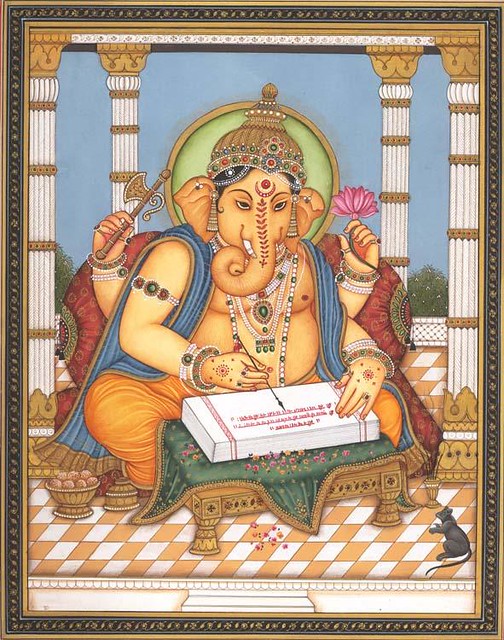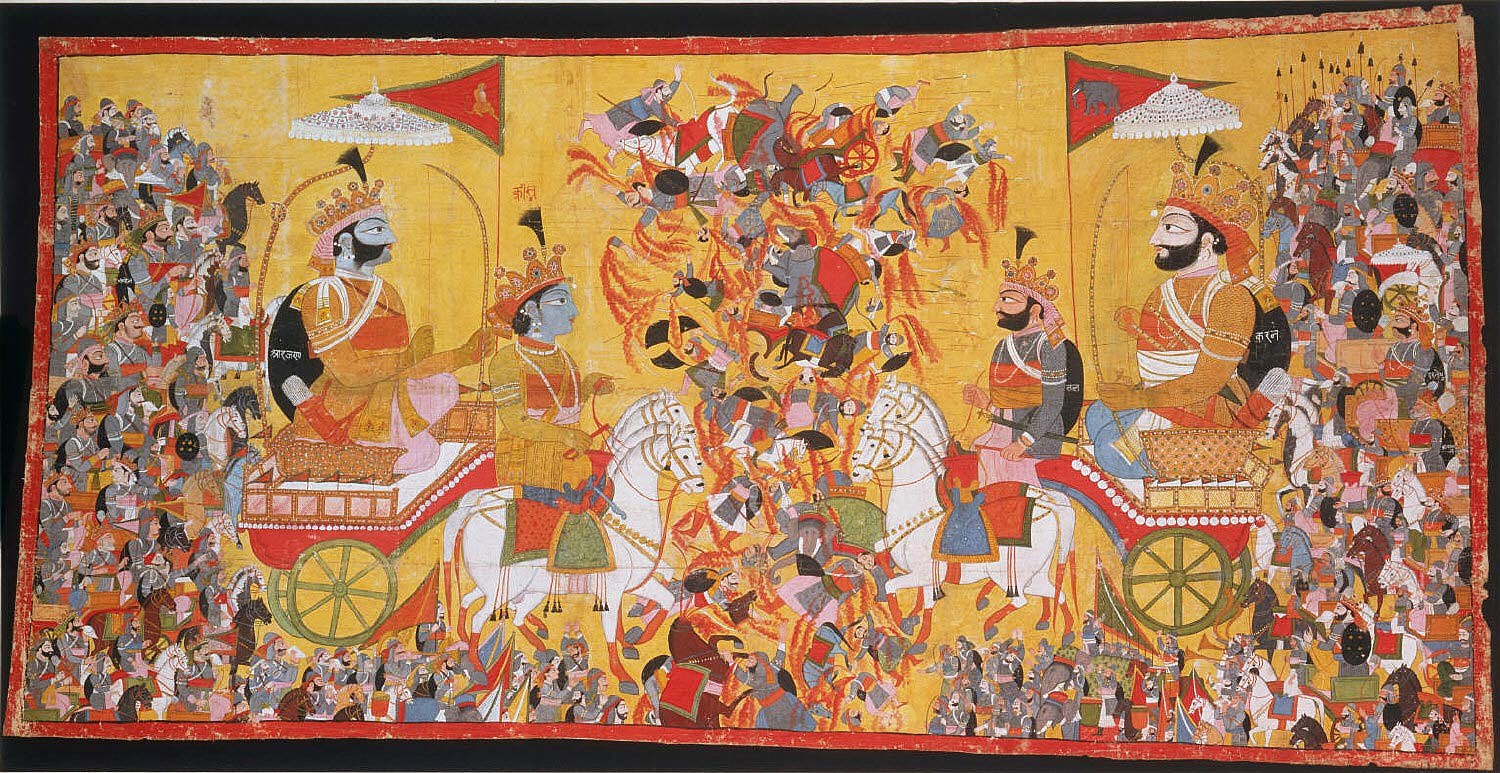VERSE 21
KEY VERSE
TRANSCENDENCE BY VERTICALIZATION
A THIN PARAMETER IS REVEALED
तटिल्लेखा-तन्वीं तपन शशि वै॒श्वानर मयीं
निष्ण्णां षण्णामप्युपरि कमलानां तव कलाम् ।
महापद्मातव्यां मृदित-मलमायेन मनसा
महान्तः पश्यन्तो दधति परमाह्लाद-लहरीम्
tatil lekha tanvim tapanasasi vaisvanara mayim
nisanam sannam apyupari kamalanam tava kalam
mahapadmatavyam mrdita malamayena manasa
mahantah pasyanto dadhati paramahlada laharim
As lightning-streak bodied, made of sun, moon and fire,
And as placed even beyond the six lotuses in a great lotus grove;
Those great ones, as seers of such, your aspect, having mind freed from dross and ignorance,
They experience the upsurging billow of ultimate delight.
In this verse the same thought is carried over from the previous verse, but in terms of a thin streak of lightning joining the two vertical limits from end to end. We can notice, in the first instance, that the experience under reference here is one of ascent and not of descent, because it is stated in the second line that the six lotuses are left below. The amplitude of the Kaula cult consists of what is limited to the sad adharas - the six Chakras - which are to be imagined as six psycho-physical levels. The Sahasrara and the Kulakunda are to be added, respectively above and below, to this set of six psycho-physical units of beauty-value. They are described here as lotuses in a vertical series.
In the first line, the lightning-streak body of the Goddess consists of the abstract essence of light, to be distinguished when we descend from the sun to the moon to the fire. It is true that the sun is brilliant, the moon subdued, and the fire placed on earth. Although emitting the same light and heat, the fire is weighed down by the weight of the atmosphere. We have to separate mentally the qualitative aspect of light and give to this thin vertical streak its fourth- or multi-dimensional status. This is to be done by a process of reduction, by omitting what is extraneous to the pure essence of light. The Isavasya Upanishad calls upon the sun to reduce its radiance so that a more auspicious verticalized form of sunlight could be revealed.
A flame in a windless room has often been used to describe the state of contemplative intelligence. Even the smoke of burnt incense can be seen to ascend vertically when the atmosphere is not disturbed. Within natural forces themselves, therefore, there is a tendency for a flame to mark out for us a path of spiritual ascent. Some of the Upanishads speak of the flame beckoning to the sacrificer to follow its lead upward to various value worlds. The thinner the streak, the better the absolute quality implied. That is the reason why the lightning-streak body of the Goddess is prominently referred to in the first line. A lightning flash with a thunderclap contains an element of wonder and suddenness which can heighten the meaning of Absolute Beauty, which is to be qualitatively understood rather than in its gross quantitative aspects.
It is necessary that the lightning-streak body be placed "even above the six lotuses" to experience the ultimate delight referred to in the last line. The more the lightning streak is thin and rises beyond the reach of lower utilitarian or hedonistic values, the better it is for the resultant purity of the light it can induce, in terms of an overwhelming experience.
Ontologically, it has to go beyond the limit of the velocity of sound to have supersonic effects revealed to the ear. This is also true of light or intelligence. The experience of delight becomes intensified by the height of the intelligence it can attain on the conceptual side. It is in this sense that "having mind free from dross and ignorance" is to be understood. The Bhagavad Gita also refers to that positive aspect of the vertical parameter which could be arrived at by putting the sun, moon and fire in a descending order to touch the O Point of our consciousness or of the positive cosmological setup. The delight itself may be said to ascend from the Muladhara to the Ajña Chakra. When these two lights meet, originating at the two limits, a fluorescent light glows as a whole, as in the case of a tube-light, irrespective of the two electrodes. The flow of light represents the essence of the light within consciousness as an overpowering emotional experience; they are inseparable, like the two sides of a coin.
ADDITIONAL COMMENTS WITH STRUCTURAL DIAGRAMS RELATED TO THIS VERSE FROM SAUNDARYA LAHARI/NOTES.
Here the wife is lightning and Shiva is reversible lightning.
WORD FOR WORD
Tatil lekha tanvim - as lightning-streak-bodied
Tapana sasi vaisva nara mayim - made of sun, moon and fire
Nishannam - as seated
Sannam api upari kamalanam - even above the six lotuses
Tava kalam maha padma tavyam - such, Your aspect in a great lotus forest
Mrdita mala mayena manasa - having mind freed from dross and ignorance
Mahantah - great minds
Pasyanto - seeing this
Dadhati - experience
Parama ahlada laharim - the upsurging billow of ultimate delight
The wife is lightning; in this verse Shiva is lightning reversible.
The lightning flash is Absolutist: down with relativistic Kaulin (Relativistic Tantric) meditation! This is absolutist and far superior.
-
- .
Slow progress in spirituality is discarded.
Put all the Chakras into one integrated whole.
They must be brought together vertically.
If you are able to structuralize and are a man of wisdom and have no other preoccupying interest - then you will straight away enjoy bliss.
One lotus represents the psychic nerve centre. (The six lotuses (?))
(The Guru talks about structuralism; he is convinced that this verse clinches all that he has said about structuralism: a great instrument of research that will be secretly copied by universities long after Einstein's theory has been forgotten.)
"So I am reading to find out if I am a great philosopher or not"
Two sets of lotuses: the highest is where Shiva and Shakti reside.
Put six lotuses in a vertical series, with Sahasrara, the thousand-petaled lotus above.
A great deal of interest was taken in some pundits by the East India Company and the Theosophical Society in order to find out the customs of the people they intended to rule. (They were instructed by traditional Bengali pundits - often belonging to more or less debased Tantric schools - they were dualists, not Advaitins like Sankara. ED)
So, do not be guided by the pundits. They are not aware of the final non-duality of the Upanishads.
Here, career ambition has coloured scholarship: they cannot produce clear literature.
This is a normal structural version.
There is a numerator lotus and also a forest of lotuses.
This is a completely normalized version of the structure which Sankara is going to employ throughout the work.
A sudden streak of lightning is the body of the Goddess; this is the vertical axis.
The sun and moon are on the Numerator and fire is in the centre.
Another version:
- Lightning streak bodied
- Consisting of sun, moon and fire ( as components)
- Seated
- Even above the six lotuses
- Your aspect - perspective - (ensemble
- In the great forest of lotus flowers
- With mind bereft of dross and ignorance
- Great men
- Those who realize experience
- The upsurging billow of supreme delight
There are 64 Kalas enumerated in Monier-Williams' Dictionary.
All of the elements are put in their perspective.
-
Then, through the vertical axis comes a streak of lightning - a "wonder" - this is the most powerful epithet.
1) Why "lightning-bodied" ?
2) The vertical axis with sun, moon and fire as Numerator factors.
3) Transcend these six lotuses and put the focus of attention above them.
4) Add the horizontal axis in the form of a forest of lotuses.
5) Relativism is to be transcended, the mind needs to be purified.
6) When these conditions are fulfilled, you can get a vision of the Absolute Goddess.
7) Inspect the vision of the Alpha Point and horizontal axis from the Omega Point.
This vision is a crystal-clear vision of the philosopher; a "monde affiné".
Here show the lightning first, then a vision by ascent.
This verse is complementary to Verse 16.
1) Kalidasa's India seen from a cloud passing over it (in his "Meghaduta"), stress the importance of Shyamala and of Ganesha writing with his own tusk; show the sunset over the battlefield of the Mahabharata.
1) Kalidasa, 2) Sankara, 3) Tagore.
There is little method here, except for work with the camera man.


